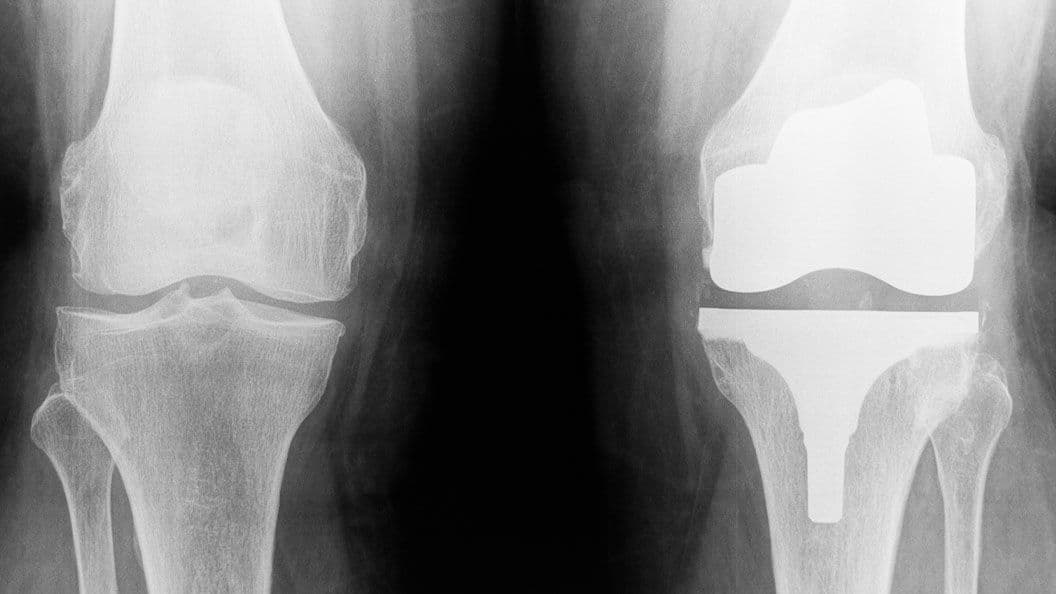Moving beyond the self-reported scale: Objectively measuring chronic pain with AI
Pain. We will all experience it at some point, and some of us suffer from it chronically. Still, measuring and treating pain is one of the most difficult and complex healthcare issues.
Together with Boston Scientific, a leading medical device technology company, we have developed a new method to measure pain. Our team of neuroscientists, data scientists, engineers, linguists, mathematicians, medical device designers, and clinicians has used AI, internet of things and cloud computing to build a new framework for doctors to help patients relieve chronic pain in a more precise, personalized and targeted way. We are presenting our research that details the feasibility and progress towards our new pain measurement, processing, and analysis method at the North American Neuromodulation Society (NANS) Annual Meeting.
Traditionally, the measurement of pain has been highly subjective. Patients are typically asked to rate their pain on a scale between 0 to 10 — and what someone perceives as high levels of pain might not be quite the same for someone else. There is also an outdated assumption that acute pain behaves similarly to chronic pain, despite more than a decade of evidence showing robust changes in underlying neural structures and functions during the transition from acute to chronic pain.1, 2, 3, 4, 5 This has resulted in an imperfect measurement system and a long-term, highly flawed standard method to assess pain.6, 7, 8, 9, 10
The convergence of several crises, including the COVID-19 pandemic and the ongoing opioid epidemic in the United States, has illuminated the impact of a weak and often distorted pain measurement system. Our collaboration with Boston Scientific attempts to transform this pressing issue.
To do so, we’re using biomarkers collected in two clinical studies that are investigating a patient population undergoing spinal cord stimulation therapy. The studies are designed to include data from up to 1,700 individuals with long-term time spans of up to three years. It includes metrics that either aren’t typically available during clinical visits, or are not able to be assessed frequently enough at a doctor’s appointment, such as daily questionnaires, movement data tracked from smartwatches, sleep sensors, heart rate monitors, and voice recordings, all collected while patients go about their normal lives.
By building AI that can sift through and pull out relevant insights from this data, we are developing a method to objectively and continuously measure chronic pain that can move beyond the standard 0 to 10 scale question. We believe this can help lay the foundation for more effective pain management, potentially helping to improve the patient’s quality-of-life and possibly reducing medication dependence for some individuals.
Although the onset of COVID-19 halted many important clinical trials and health research studies, the benefit of our initiative is that it is structured to work with patients in their daily life, without the requirement of going to the doctor’s office.
Even prior to COVID-19, there was a dire need for better remote and telehealth services. The clinical study research platform powering our collaboration was designed to continuously collect and analyze biomarkers that patients exhibit in their natural environments, instead of during sporadic and potentially burdensome in-person clinic visits.
This allowed us to continue our work uninterrupted with one important advantage: we could now see how a major global crisis, such as the COVID-19 pandemic, could impact a number of other factors known to influence a patients’ chronic pain experience, such as pain intensity, sleep quality, exercise, medications, and mood.
As these data points were monitored throughout the pandemic, our team developed AI models that mapped and correlated how fluctuations within these factors led to increases or decreases in an individual’s chronic pain. Of course, there is no one-size-fits-all for how any of us respond to a stressor, particularly a pandemic. This is also true with chronic pain: some patients’ pain worsened alongside factors such as a decline in sleep quality or less exercise and movement, while others improved their pain levels with increased exercise and were resilient in their mood and sleep habits. Still others stayed the same despite fluctuating factors.
This can help lay the groundwork for clinicians to develop more personalized treatments to pain in light of external influences and demonstrates the potential to better measure and prepare for changes in chronic pain in the face of future global events.
It seems intuitive that measuring how well and often an individual moves is indicative of how much pain they’re experiencing. But in the current and standard method of assessment in which clinicians quiz patients on how well they’re moving and how they’re feeling, it can be challenging to get an accurate picture. For example, a patient may be moving well on the day they visit the doctor and forget to mention the week before when they had a hard time getting out of bed. Or perhaps a patient downplays their chronic pain symptoms, and in the rush of back-to-back appointments, a clinician doesn’t notice.
As part of our work to build an accurate platform for pain management, we’ve demonstrated the ability of AI algorithms to help measure chronic pain based on the analysis of movement and rest cycles from smartwatch data. This is important for a couple of reasons:
- Enabling pain to be objectively and passively measured - and in combination with other biomarkers that can be assessed from the comfort of an individual’s home (such as sleep, speech, mood and medication usage) — takes the burden of measurement off the patient.
- Assessing pain through aggregating and analyzing biomarkers such as movement can help lay the groundwork for more accurate and objective chronic pain measurement, and has the potential to help eliminate subjectivity and bias from both the patient and clinician perspective.
Being able to objectively quantify pain could help to resolve other issues impacting our healthcare system. For example, clinicians being able to more accurately prescribe when and how much pain medication is needed could help to reduce the chance of introducing bias or over-prescribing and initiating a dependence on opioids. And if we are one day able to integrate medical devices, such as spinal cord stimulators, with AI to predict chronic pain signals — another goal of our collaboration with Boston Scientific — we could potentially help certain individuals tailor the amount of pain medication they require on a daily basis, instead of a blanket prescription.
Our work with Boston Scientific builds on IBM Research’s vision to build a digital health platform for the more personalized treatment of disease. With AI, we are building algorithms and platforms that can collect a number of non-invasive metrics and biomarkers from consenting patients via specific channels. Folding in the analysis of biomarkers such as speech, movement, pain and sleep into an overarching platform can potentially help clinicians gain a more holistic and accurate picture of their patients’ health.
References
-
Apkarian, A. V. et al. Chronic Back Pain Is Associated with Decreased Prefrontal and Thalamic Gray Matter Density. J. Neurosci. 24, 10410–10415 (2004). ↩
-
Mansour, A. R. et al. Brain white matter structural properties predict transition to chronic pain. PAIN 154, 2160 (2013). ↩
-
Hashmi, J. A. et al. Shape shifting pain: chronification of back pain shifts brain representation from nociceptive to emotional circuits. Brain 136, 2751–2768 (2013). ↩
-
Baliki, M. N., Geha, P. Y., Fields, H. L. & Apkarian, A. V. Predicting Value of Pain and Analgesia: Nucleus Accumbens Response to Noxious Stimuli Changes in the Presence of Chronic Pain. Neuron 66, 149–160 (2010). ↩
-
Baliki, M. N. et al. Corticostriatal functional connectivity predicts transition to chronic back pain. Nat Neurosci 15, 1117–1119 (2012). ↩
-
Smythe, H. A. & Bogoch, E. R. Common Measures and Analytic Techniques Provide Flawed Assessments of Pain: Modeled Data, and Hip Replacement Study. J Rheumatol 35, 2400–2405 (2008). ↩
-
De Williams, A. C., Davies, H. T. O. & Chadury, Y. Simple pain rating scales hide complex idiosyncratic meanings. Pain 85, 457–463 (2000). ↩
-
Petre, B. et al. A central mechanism enhances pain perception of noxious thermal stimulus changes. Sci Rep 7, 3894 (2017). ↩
-
Cecchi, G. A. et al. Predictive Dynamics of Human Pain Perception. PLoS Comput Biol 8, e1002719 (2012). ↩
-
Sturgeon, J. A. et al. Nonlinear Effects of Noxious Thermal Stimulation and Working Memory Demands on Subjective Pain Perception: Nonlinear Effects of Noxious Thermal Stimulation. Pain Med 16, 1301–1310 (2015). ↩
Related posts
- Deep DivePeter Hess
All decisions have trade-offs. IBM’s Wei Sun is an expert at weighing them
Q & AKim MartineauIBM Storage Scale delivers real-world performance: an in-depth analysis
Technical noteBrian Belgodere, Chris Miller, John Lewars, Matthew Klos, Yukio Hayashi Leon, Mara Miranda Bautista, and Olaf WeiserDebugging LLMs to improve their credibility
ResearchKim Martineau





